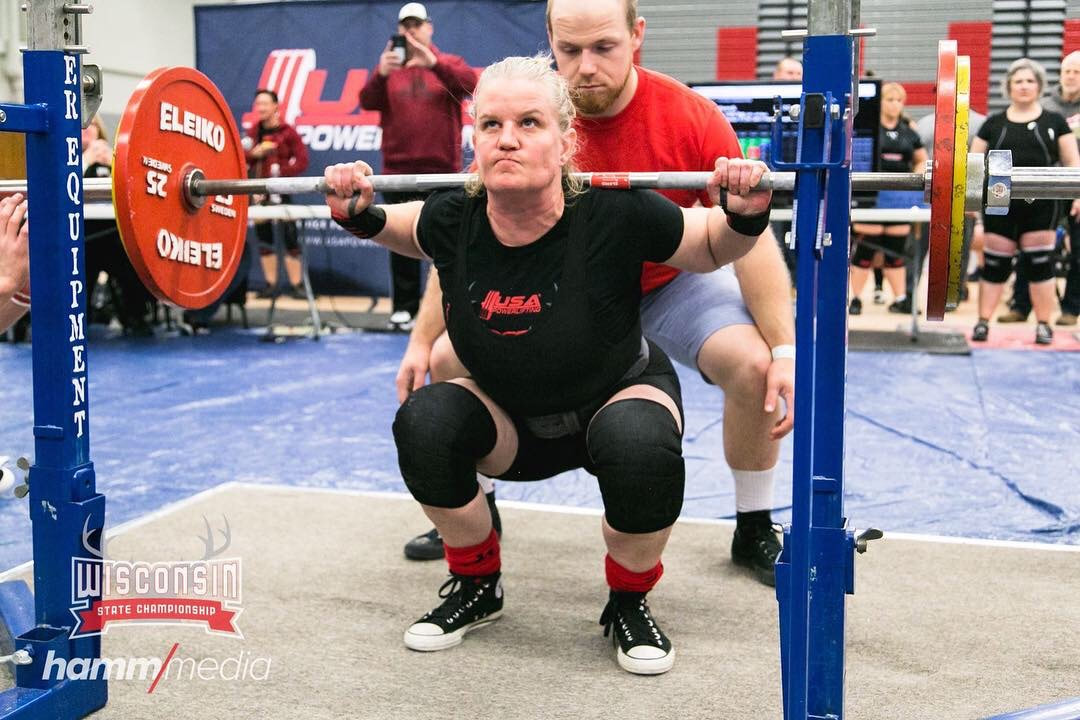|
eA few weeks ago, someone asked me what the difference was between “cutting” and “dieting” in powerlifting. I’ve been thinking a lot about that on several levels, so I want to address that question and why it matters if you are a powerlifter or just a person trying to look a little bit better and drop a few pounds.
First, it’s important to understand that there are weight classes in the sport of powerlifting. People compete against other people in their weight class. Who cares? If I weigh 100 pounds and compete against someone who weighs 200 pounds, I’m at a clear disadvantage. For the purpose of this post, we are going to use my weight class: 72 kilograms, or 158.9 pounds. I have to weigh that or under to compete against other women in that class. If I come in at 72.1KG, I compete against women in the 84KG class… I’d be at a clear disadvantage. In strength sports, the general reality is that the bigger you are, the more weight you can lift. Why? Well, in an ideal world, your weight would be pure muscle, and that’s what moves iron. So, in my ideal situation, I want to train at 72 kilograms, not 64 kg (the next weight class down). I aim to be at that higher weight when I train and compete… but not over it. Here’s the challenge… when considering your body composition, things get way more complicated. We use three macronutrients to build and fuel our bodies: protein, carbohydrates, and fat. We need them all to function, and strength athletes need protein to build muscle and carbs to fuel (give you energy) to make it through training. Fat is the third wheel here. You need it to regulate hormones (critical for all athletes, especially women), and your body loves it… but it’s the thing most of us have in excess… it’s the place we can and want to lose weight. So, dieting is a restriction of calories (caloric deficit) to lose mass through fat. That’s it. We look at macros to figure out how we lose that mass. If you don’t eat enough, you will not increase your muscle mass, which is the goal. It would be best to have a certain amount of protein to build muscle and carbs to fuel your workouts (and life in general). So, if you aren’t also losing fat, you will gain weight. No harm, no foul. Just move up a weight class. That’s why we powerlift, right? Eat all the donuts. We love you. I love you. Please give me a doughnut. However, if you are like me, you live at just around 160 pounds, about two pounds away from the 72 kg class. That’s where I want to compete. As I gain muscle mass through training, I need to lose it somewhere else… fat’s the only option here. If you have a body composition scan, you will find out your fat, muscle, and bone percentages. The generally accepted “healthy” fat ratio is under 25% of your total weight in fat. Anything over that, and you are considered obese. And who cares… those are just numbers based on averages… screw that. But, if you are trying to compete at a certain weight and increase muscle mass, you must cut your fat to make that weight class. That’s the only option. That is why you diet… to get rid of fat. Dieting is a long-term process. You need to understand the amount of calories your body needs to maintain your current weight and what it needs to lose. That is a moving target because you will increase weight as you increase your muscle mass. Dieting is an art. It requires you to know what your body needs, which you can adjust as your body composition changes over time. If I do the standard macro calculation, it will tell me to eat 2,800 calories a day. I also know that as a 49-year-old woman, I will not cut fat if I do that. I know that because I have tried. I also know that at this point, I need 1,800 calories to maintain my weight and 1,400 calories to lose weight. And I also know that those numbers will change as my body composition changes and as I age. This is why it is helpful to work with your coach and a specialist who knows your sport and understands macros and food. So, what is “cutting?” Cutting is the massive lowering of calories (caloric deficit) and water manipulation in your body. Generally, one cuts a week or two out. For me, this has included cutting calories, but more so manipulating water intake so that my body would eliminate as many unnecessary water stores before a weigh-in as possible. It’s generally harmless unless you get completely out of control with caloric intake… you can’t cut to 700 calories a day for five days before a competition and expect to perform well… it’s impossible to refeed with enough nutrients before you lift. In my experience, cutting over a steadily maintained body weight is not desirable. There’s a lot of stress before a competition… adding whether or not you’re going to make your weight class is not necessary to add to the mix. You know when you will compete… plan for it on the plate and at the gym.
0 Comments
|


 RSS Feed
RSS Feed